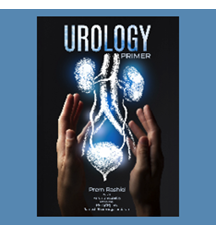2024 | Volume 25 | Issue 6

Author: Associate Professor Felix Behan, AM
In November during the Melbourne Cup week I penned these lines recalling my acquaintance in Carlton, Lucky Rocca, who made the Melbourne Cup for over 30 years as a goldsmith. The present trophy is now made overseas from 1.65 kgs of 18-carat gold.
The story of the Melbourne Cup goes back to the affluent days of Melbourne after gold was discovered in 1851, making Melbourne one of the wealthiest cities in the world as reflected in its architectural developments, cultural and academic achievements, and scientific expertise. Melbourne even became the centre of surgery to the annoyance of Sydney and the antique Cowlishaw book collection came from Sydney collector because Melbourne had the wealth to buy it. The depression brought this affluence to a halt in the 1890s.
Immigrants came to dig for gold coining the nickname ‘Digger‘ because of their mining endeavours, then World War I needed trenches and the name stuck.
Lucky, an Italian immigrant from Calabria, was an apprentice to James Steeth, who started the Melbourne Cup design in 1919.
I would visit Lucky regularly to do repairs to my antique silverware collection when hinges in old teapots kept getting loose. He became a close friend and recently mentioned he had pins and needles in his fingers restricting his work capacity. I gave him the name of a good hand surgeon, David McCombe, who incidentally did my Carpal Tunnel Syndrome (CTS) years ago. Lucky organised a referral through his local practitioner and wisely has had one side done with the other side to be done later.
Red dots
The image of his hand holding the Melbourne Cup outlines the surgical exposure site as marked.
David was my registrar at the Western Hospital years ago and it is satisfying to see him continue the same exposure technique I established there. In other words, examine the full length of the nerve and check its recurrent branch, release the Carpal ligament (the cause of CTS), which I then reattach loosely as it is part of normal hand anatomy and helps minimise postoperative pillar pain.
My own CTS is an interesting story and I did not explore the option of Worker’s Compensation when I used to operate up to 30 cases a week in the public system at both the Western Hospital and Peter MacCallum Cancer Institute.
Earlier when I used to drive to Lorne the pins and needles in my hands would present just before Geelong from my driving position, I presume. It is quite understandable how a delivery driver doing the same route may develop CTS symptoms from a similar driving position. The patient then goes to their local practitioner to explore any worker’s compensation issue, which the insurance company usually deny because of a published paper wrongly stating that CTS can never be attributed to Worker’s Compensation. In its response I state that if a patient has the diathesis doing some repetitive manoeuvre, this may precipitate symptoms of median nerve compression. CTS may have developed and the patient should be given the benefit of the doubt. Delays in treatment lengthen the duration of symptoms while damaging the nerve.
I refer you to the image of Lucky’s hands (above) and the surgical exposure site visualised with red dots. Another clinical finding is the atrophy of the thenar eminence is a telltale indicator. It takes a while to recover as reflected in the wrinkling of the skin, consistent with thenar muscular atrophy, a clinical observation before any EMG test. As you can see in Lucky’s right hand, recovery is still not complete but the pain has disappeared and he is back doing artisan work.

A/Prof Felix Behan
I have included my own photograph here—and it is the closest I will get to holding a Melbourne Cup, but here I am holding Lucky’s model of the original design with its art deco style handles.

Lucky repairing the spiritual mace
This image shows Lucky repairing the spiritual mace from St Patrick’s Cathedral damaged over the years.
He does all the silversmith work for the Archdiocese of Melbourne, including chalices for the recently ordained priests—yes, his talents are renowned and his expertise is noted. And like all surgical procedures, if your technique is good so is your outcome minimising complications—an observation from Sam Mellick whom I took Lucky to see one day when he was down for RACS vice presidential commitments. Sam and I would see each other socially.
Sam was amazed at the range of Lucky’s silversmithing talents—one valuing the other because surgeons are no more than artisans. In other words, if you have talent it sings.
Back to my Melbourne Cup story, which I have only attended on one occasion but then the bubbles won.


